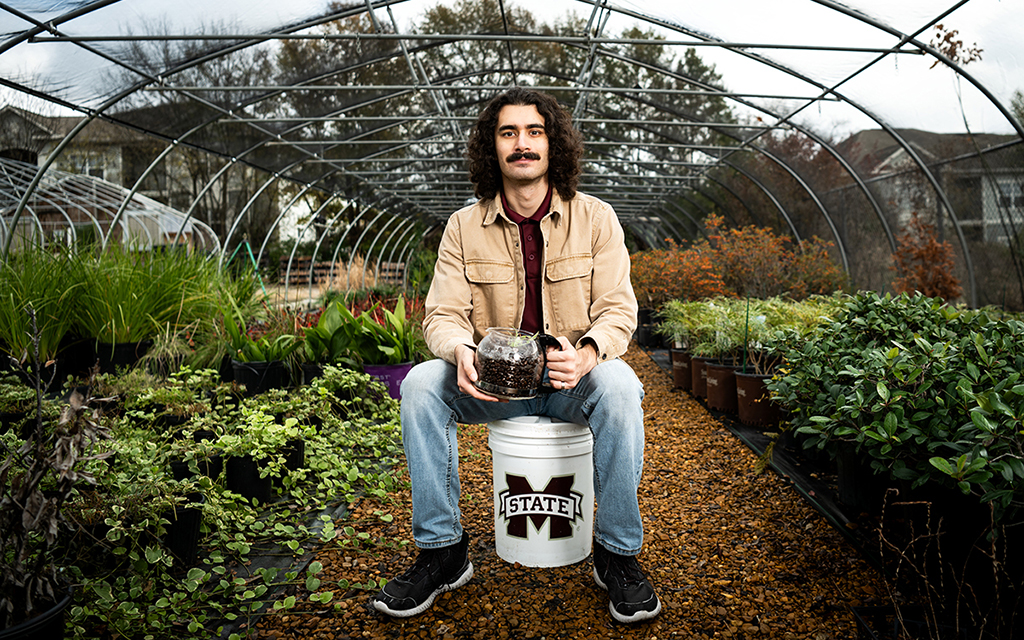As a Mississippi State senior, Lishman Heathcock’s car always smelled like coffee, even though he never drinks it.
“Not a drop,” he said with a laugh. “But I do like the smell.”
Every Tuesday, the electrical engineering student stopped by the campus Fresh Food Company and Starbucks coffee shop in the Colvard Student Union to collect 10 to 15 gallons of used coffee grounds.
Then, Heathcock would drive just off Starkville’s main campus and empty each five-gallon bucket into the university’s compost pile. The Waynesboro native tackled this trial-run project as a student intern with the university’s Office of Sustainability.
Having earned his degree in December, he now hopes to work with renewable energy as an electrical engineer. Although his coffee composting project isn’t directly correlated to his career aspirations, being environmentally conscious has always been in the forefront of his mind.
“Sustainability is generally a good idea no matter what you do or what you’re in,” he said. “It’s good practice. The more we can make Mississippi State sustainable, the better the environment will be, and it will reflect in costs as well.”
According to Jim Bo Hearnsberger, associate director of campus grounds, even simple steps toward sustainability can have an impact. For instance, recycling campus coffee grounds can help lower the university’s fertilizer costs, correct erosion issues and improve the soil’s water retention.
Using coffee grounds as an organic compost also creates healthier soil and material for landscaping, he added. Though Heathcock’s project was a trial run, the small compost pile has already contributed to amending soil for various plants and projects around campus.
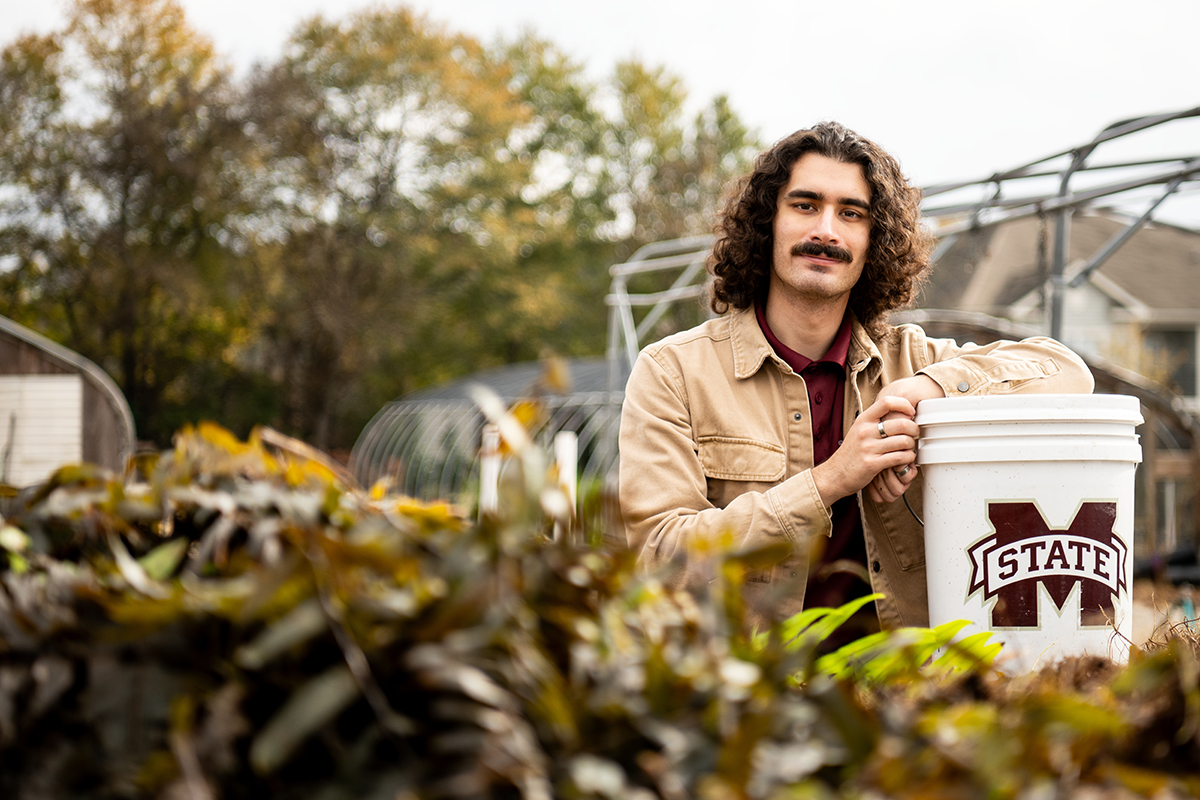
“It would be good to see it expand,” Hearnsberger said. “It would be nice to supply enough material for amending soil for all new construction jobs. We’re not there quite yet, but maybe these smaller efforts we have can show how productive that can be.”
Heathcock isn’t exactly in the same line of work as Hearnsberger, but they both believe in and have seen the benefits of working toward a self-sustaining campus.
“You don’t have to have a landscape or horticulture background to see the bigger picture of why sustainability is important,” Hearnsberger said. “I’m glad to see students wanting to be involved. This project paints the picture of what we could be doing. I’m 100% supportive and glad that someone in his field, which is totally outside of our world, is interested in it.”
Heathcock, who also was a member of the Students for Sustainable Campus organization, worked alongside several departments to ensure the project’s success. Each week while unloading buckets of coffee grounds, he saw the university’s greenhouse just behind his compost pile. Though he considers his project on the small side, seeing how used coffee grounds could enrich soil and help shrubbery and plants thrive made him see it was impactful, nonetheless.
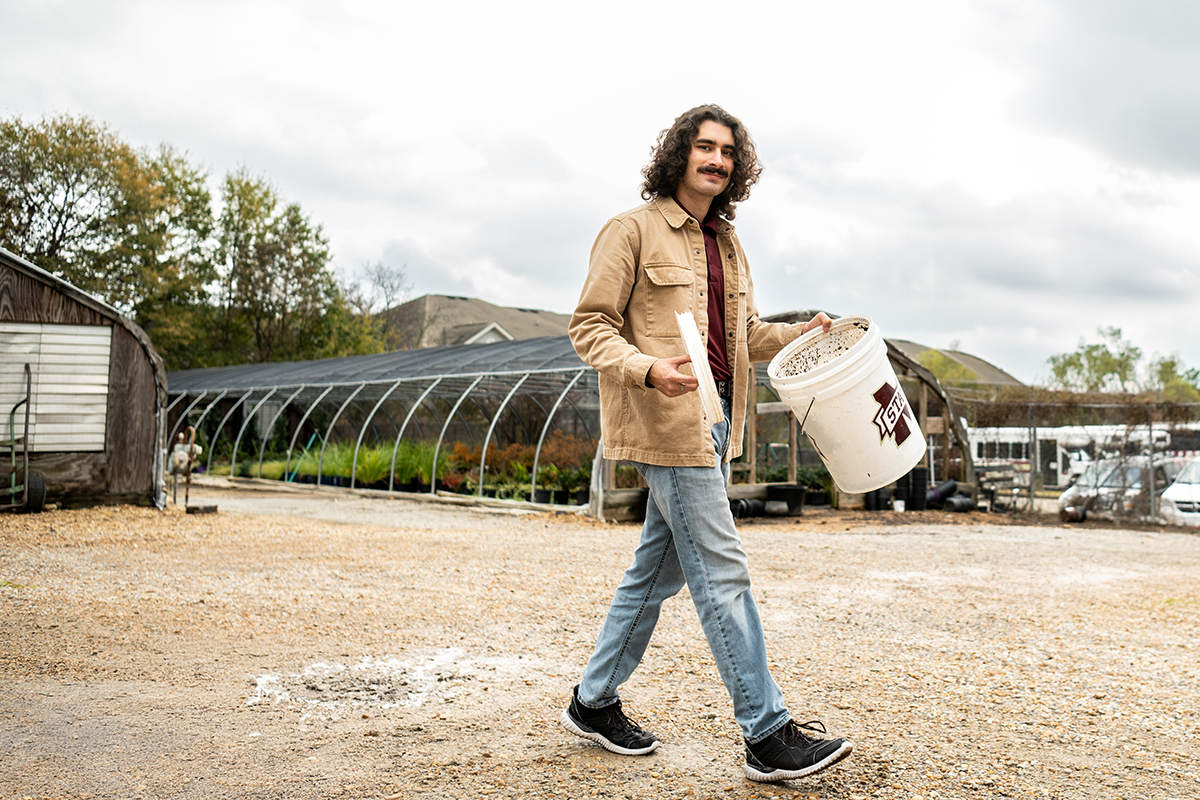
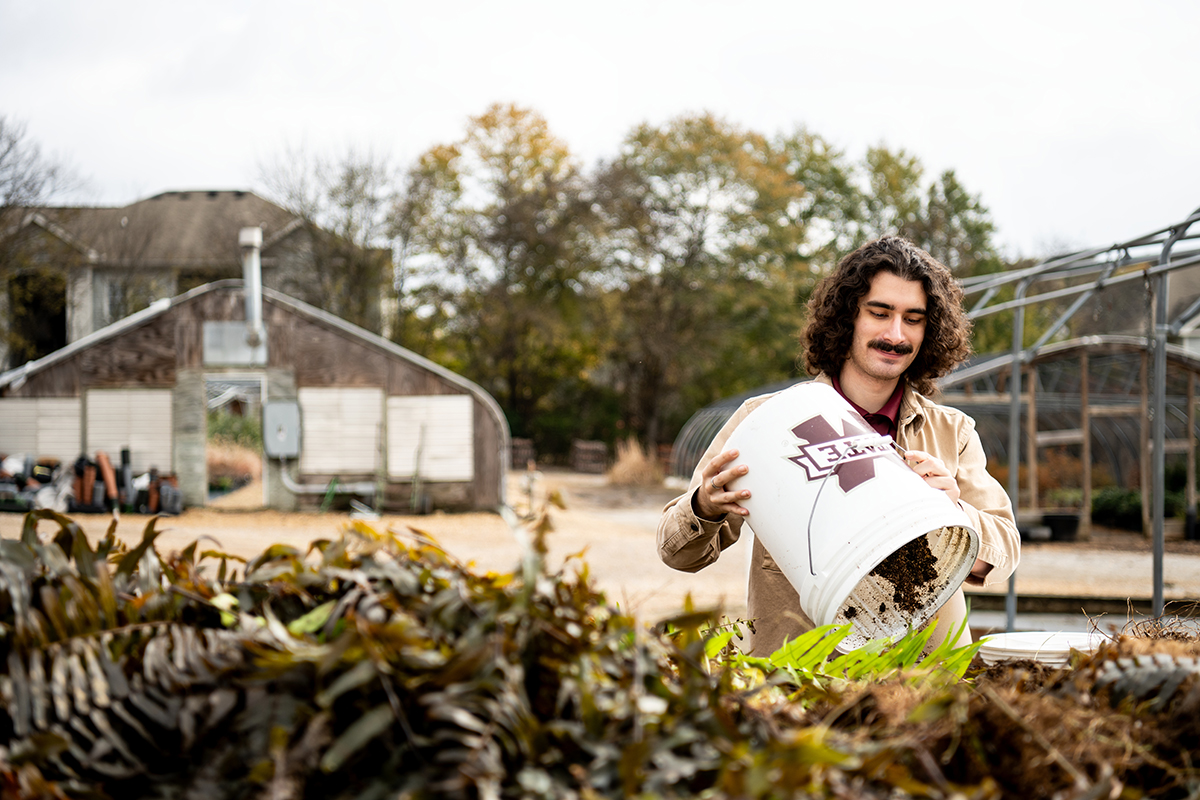
Likewise, Hearnsberger said he recognizes the importance of sustainability and the university’s landscaping department is making those changes toward sustainability whenever possible—including planting more native plants and adding pollinator gardens throughout campus.
Part of building sustainability comes from the public’s buy-in, Heathcock said. That starts with simple conversations. For him, collecting used coffee grounds helped raise awareness for the university’s array of sustainability efforts, which include recycling, energy efficiency, community gardens and educational events.
“My friends think it’s pretty cool,” he said. “They think it’s cool that there’s even a department on campus and efforts on campus to do things like this big or small. They think it’s cool that they know someone that’s a part of it.”
Heathcock hopes to see his project expand over time, along with the university’s efforts to becoming more sustainable.
“Sustainability is creating what we can from what we have, like this compost,” he said. “We’re trying to get campus to be more self-sustaining, so we aren’t consuming more resources than we’re creating. Hopefully in the future, I’ll be surprised with how it grows.”
By Mary Pollitz, Photos by Grace Cockrell
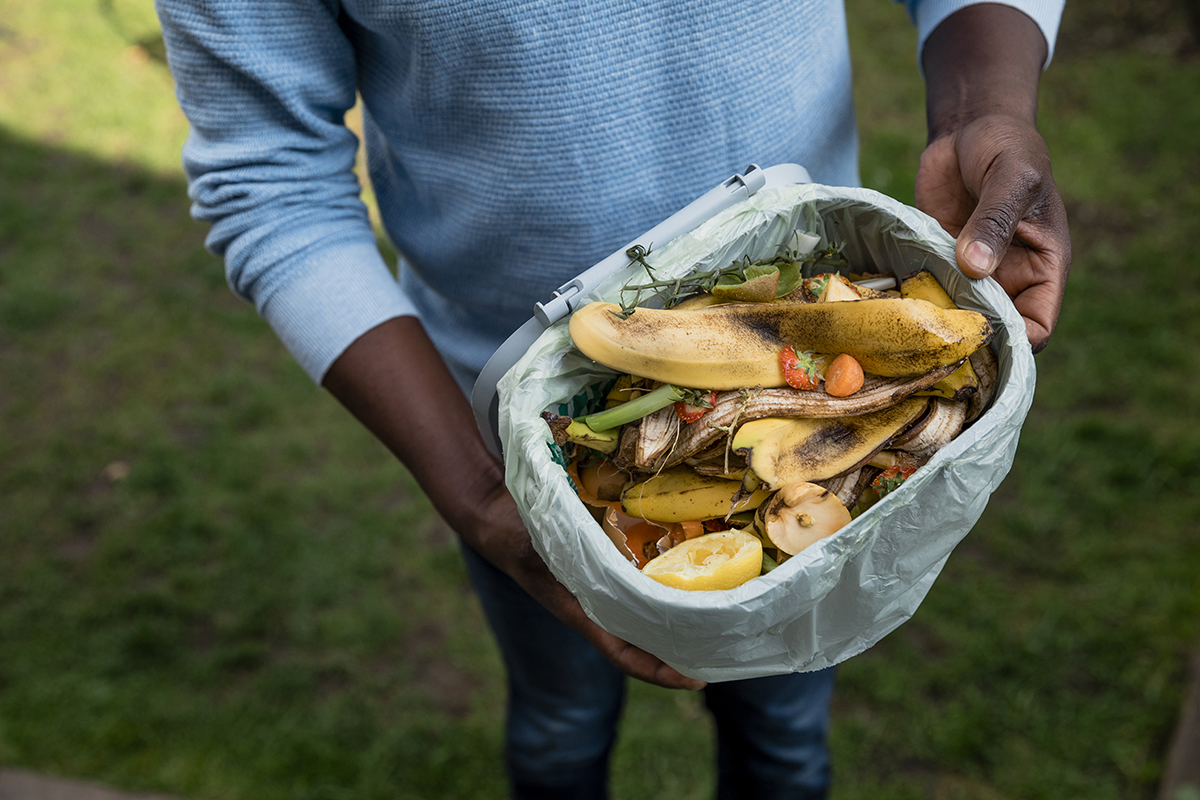
Composting at Home
At-home gardeners’ thumbs can turn a little greener through a series of intentional changes in their own backyards.
For example, by collecting lawn clippings or saving fruit and vegetable scraps, gardeners can create less waste while composting a rich, organic soil coined “black gold.”
Composting, like any hobby, can vary in complexity and investment. Simply put, you can compost in a fancy rotating tumbler or a pile in the corner of a yard.
Jeff Wilson, Mississippi State consumer horticulture specialist and Master Gardener volunteer coordinator, said composting is great for reducing unnecessary landfill items while providing a rich soil for gardening and landscaping.
“It doesn’t have to look fancy to make good compost and give you control of what you’re putting in the system,” Wilson said.
He recommends the following steps to get started:
1.) Find a good spot. An ideal area for composting is at least a 3-by-3-foot space in a non-flooding area. If not using a rotating tumbler or other container, find a level spot of bare ground to start.
2.) Start adding materials. It’s best to add smaller items, such as grass clippings or chopped vegetables and fruit. Make sure to avoid larger items which will prolong the decomposition process. Never add inorganic materials, oil, meat, fat, bones, dairy or fish.
3.) Add water. After adding the materials to the compost area, either wait for rain or sprinkle water on the pile. The goal is to dampen but not drown. The moisture is needed for decomposition, but overwatering can slow down the process.
4.)Turn and mix. Though decomposition will naturally occur, turning the pile will help speed up the process. Whenever fresh material is added, just use a shovel to push the newer material to the center.
5.) Harvest. The compost is ready to use once it is dark brown and has an earthy smell. Once ready, add the “black gold” to your landscaping and gardening projects.


